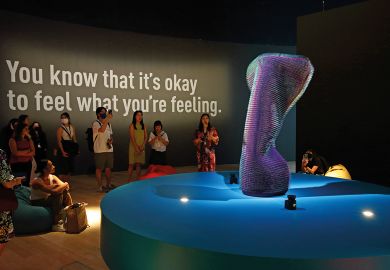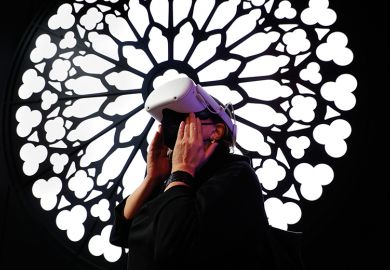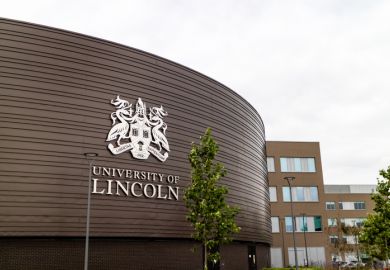Source: Miles Cole
When I started out in my academic career, I never imagined I would have to deal with the issue of online harassment – let alone harassment from fellow professionals working in higher education.
I was aware of high-profile cases of internet trolling, but I had no celebrity or clout to suggest that I might stand out as a target for cyber-abuse. Yet, as Times Higher Education has reported (“Academics face the cybercreeps alone”, 21 November 2013), that’s exactly what happened, and more than once. In one case, I was sent inappropriate photographs of a sexual nature. The problem of online harassment reoccurred when I moved to a different institution.
My experiences, it seems, are far from unique. I am working on a joint University of York-University of Southampton research project; in our survey of 240 higher education sector professionals, some two in five respondents said they had been subjected to online abuse in their everyday working lives. The problems ranged from general bad-mouthing to extreme forms of sexual and physical victimisation, and 62 per cent of this group reported that their abusers were known to them offline.
While workplace harassment is clearly not a new phenomenon, its nature and reach continue to be extended through digital technology. Higher education professionals increasingly work at the interface of the academic and the public worlds, invested in research impact, community engagement and public intellectualism; this means that our workspace is expanding. Digital technology makes our workspace more accessible and more immediate, creating a perfect environment for cybercreeps.
Knowing that every time we open ourselves up to online media we put ourselves at risk of this sort of abuse, it seems obvious that universities should have clear mechanisms in place to minimise and directly counter that risk. Our research suggests that when faced with cyber-abuse, most victims ignore it. But perhaps more disturbingly, in those cases where staff have reported online abuse to their institutions, those institutions often, in turn, disregard it.
Our findings align with those of others, such as Chantal Faucher, Margaret Jackson and Wanda Cassidy’s recent review of 465 cyber-bullying policies from 74 Canadian universities. This study indicates that higher education is out of step with the current information technology climate.
Cyber-abuse needs to be confronted, and anthropology academic and blogger Kate Clancy is among those to have proposed a number of ways of doing so. These include developing cross-institutional codes of conduct and community response tools that allow people to join together in solidarity, flagging inappropriate content and exposing aggressors (one such strategy is the #trollerderby hashtag on Twitter).
Rather than normalising patterns of harassment, we can instead work to normalise diversity. Many of us struggle to have our ideas critiqued on their scholarly merits rather than on our personal characteristics. That this predicament continues to be tolerated relates in part, as science reporter Emily Graslier has argued, to an ongoing lack of representation of different voices in highly visible spaces.
Encouragingly, progress is being made on various fronts. Jisc Legal, a service of the UK’s higher education IT consortium, is arguably one of the pioneers in championing institutional e-safety policies, recognising that higher education institutions have a duty of care to their students and staff in terms of IT usage. Jisc’s guidelines on the use of Facebook, for example, set out an institutional approach that echoes the acceptable use and take-down procedures advocated by Clancy.
Some individual institutions also serve as models of good practice. Cardiff University’s antisocial media strategy acknowledges the problems that staff and students can face from harassers external to the university. Cardiff provides a reporting form and recognises its responsibility to investigate and possibly take disciplinary action against outside perpetrators.
Universities, in fact, have the leverage to assert leadership in e-safety: they regularly negotiate contracts with online service providers such as Microsoft and Google. Sadly, these negotiations are not transparent; nevertheless they offer opportunities to rework usage and privacy terms. The sector has cross-cutting entities – including unions and bodies such as the Russell Group – that could play a significant role in the process.
As it is, existing online privacy and safety policies in universities focus mainly on protecting intellectual property and institutional image. This may arise from interest in the assets and brand of the university. Equally, it could be a reflection of the fast pace of digital media, which has left institutions clinging to issues familiar from the offline world.
Either way, I think we are at a watershed moment where the weight of social proof about the risks of online communication is definitive. Our institutions have the resources to help keep us safe, and a path is already being laid by some.
We need clear policies on acceptable behaviour, enforced consequences for those who breach them, support systems to lead administrators and others through the process when it occurs, and awareness campaigns. It’s time to get on board.
Register to continue
Why register?
- Registration is free and only takes a moment
- Once registered, you can read 3 articles a month
- Sign up for our newsletter
Subscribe
Or subscribe for unlimited access to:
- Unlimited access to news, views, insights & reviews
- Digital editions
- Digital access to THE’s university and college rankings analysis
Already registered or a current subscriber? Login





